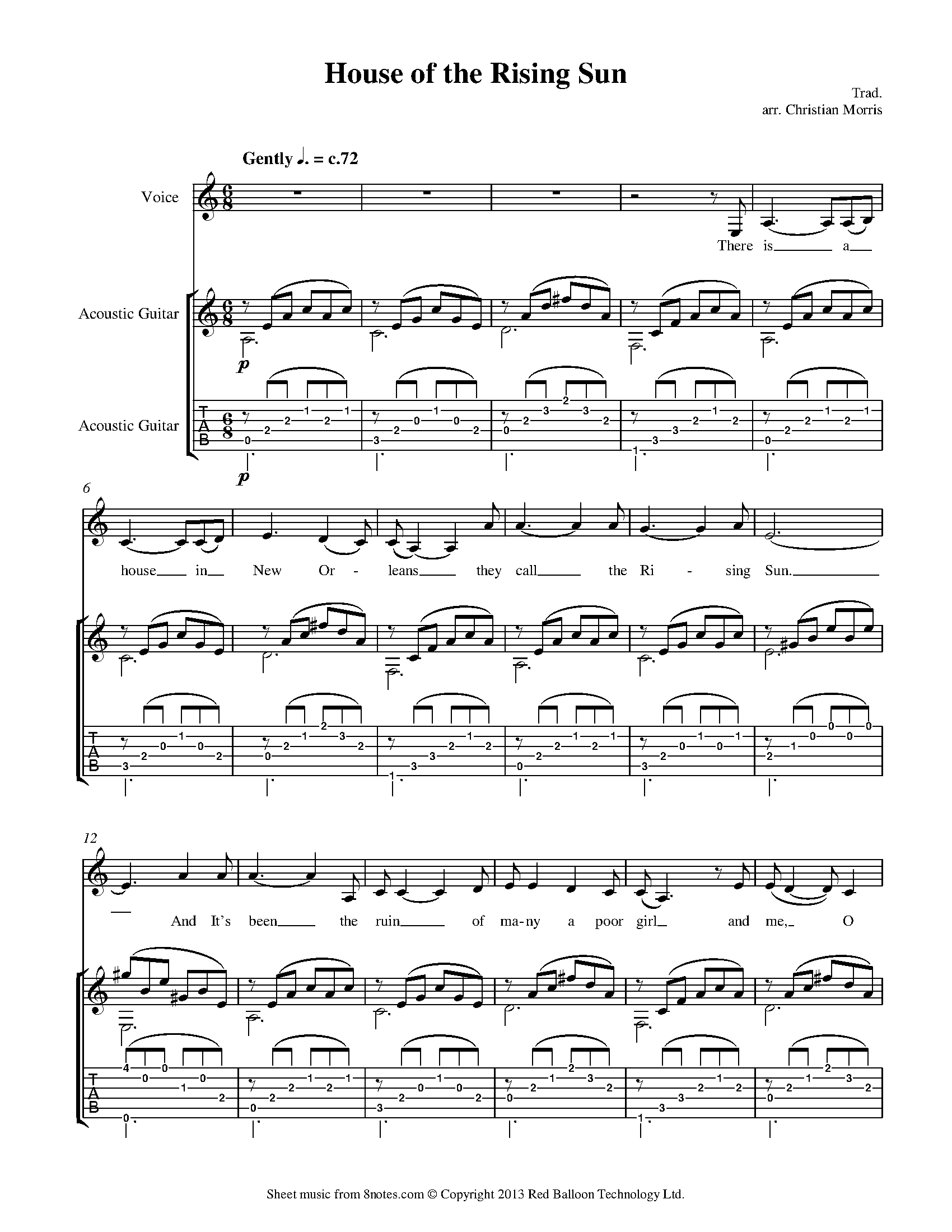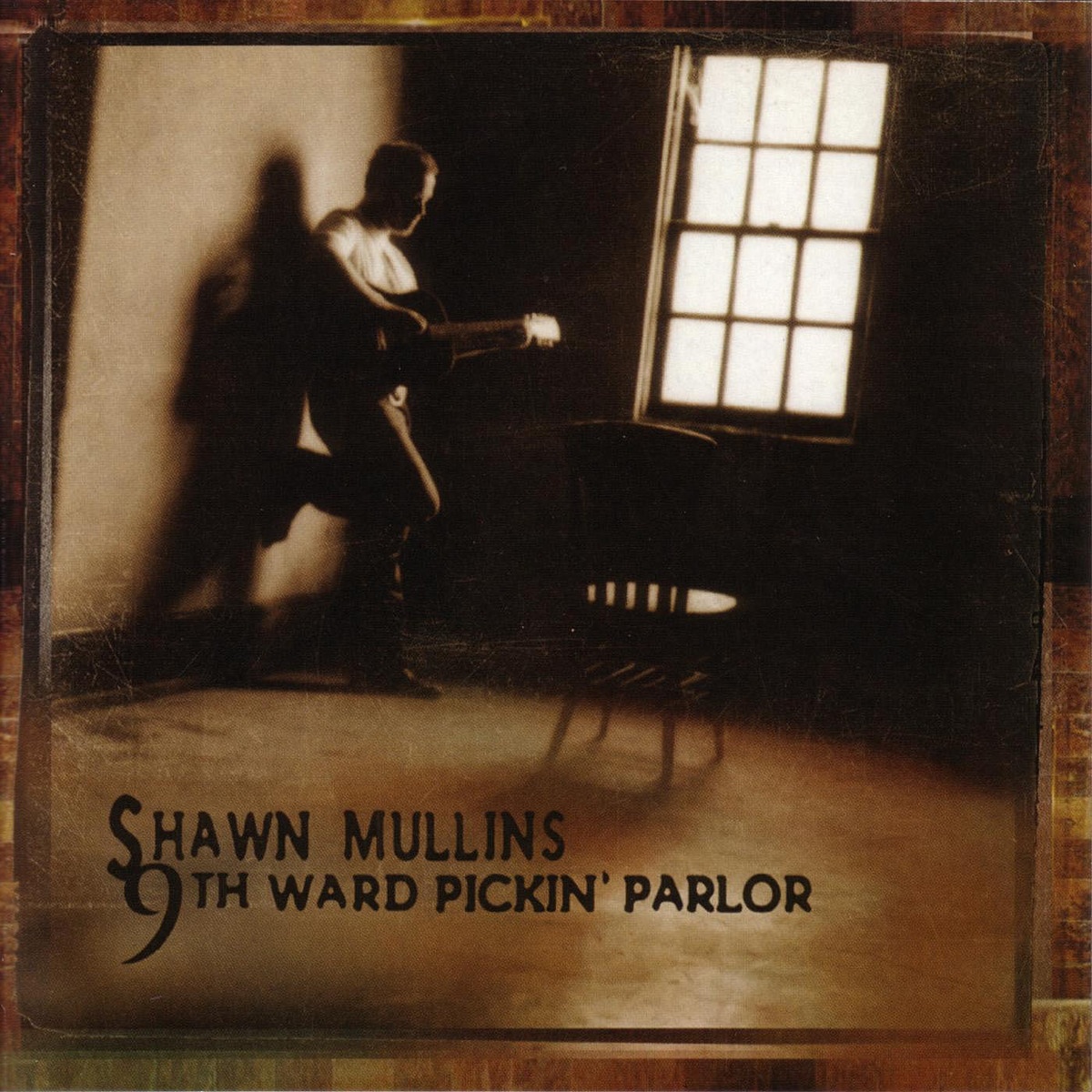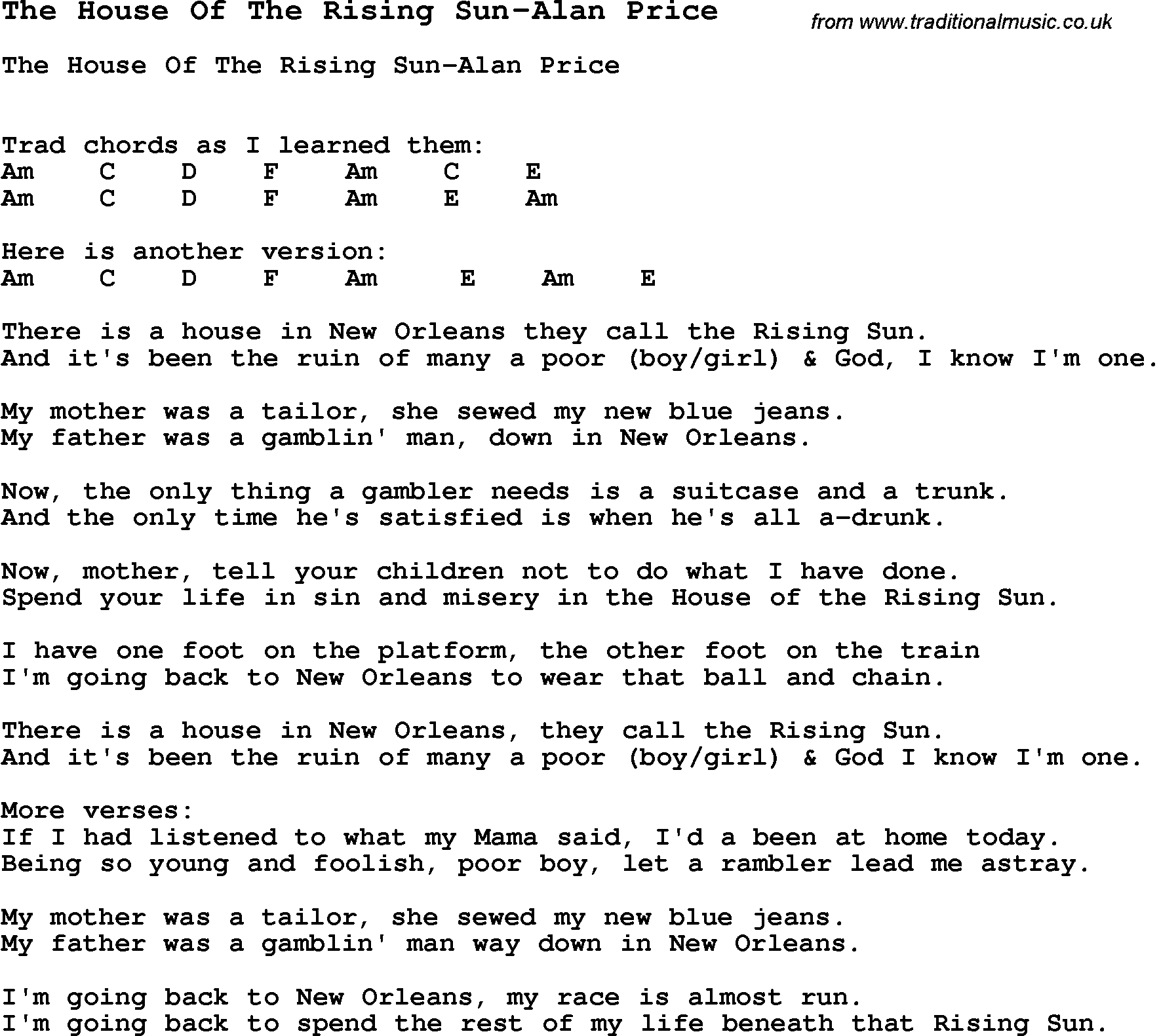The House of the Rising Sun Cover Single Album by RedMoon
Table Of Content

In his 1941 songbook Our Singing Country, Lomax credits the song to Georgia Turner, using Martin's extra lyrics to "complete" the song. Roy Acuff, an "early-day friend and apprentice" of Clarence Ashley's, learned it from him and recorded it as "Rising Sun" on November 3, 1938. There is a house in New Orleans / They call the Rising Sun / And it’s been the ruin of many a poor boy / And God, I know I’m one, they sing in the chorus. A third was "The Rising Sun", which advertised in several local newspapers in the 1860s, located on what is now the lake side of the 100 block of Decatur Street.[110] In various advertisements it is described as a "Restaurant", a "Lager Beer Salon", and a "Coffee House". At the time, New Orleans businesses listed as coffee houses often also sold alcoholic beverages.
Popular Rock Bands Whose Biggest Hit Is a Cover
If the music sounded almost supernatural, Burdon’s vocal gave the song its terrestrial heart, one rent in two by the loaded dice and lost bets. He tempers his performance, starting off low and with deadly serious intent to grab your attention. When he soars up an octave, all the pain and anguish come pouring out.
Robert Johnson, ‘Cross Road Blues’
The Kenny G instrumental "Songbird" owes much of its success to VH1, which launched a year earlier and played the video to death. The tragedy of “House of the Rising Sun” is that the narrator seems to have lost his free will. He knows that the house will be his damnation, yet he is en route while he is telling his sad story. At the very least, he tries to use his example to save others—Oh mother, tell you children not to do what I have done. And maybe he even hesitates for just a moment before committing to his return, Well, I got one foot on the platform/The other on the train.
The Modern Versions
I put a different spin on it by altering the chords and using a bass line that descended in half steps—a common enough progression in jazz, but unusual among folksingers. By the early 1960s, the song had become one of my signature pieces, and I could hardly get off the stage without doing it. “I really thought I was writing country songs.” It reflected the times; the 1970s were the first decade since after World War I in which more African Americans were moving to the South than leaving it.

Shortly after Gabriel quit Genesis in 1975, he climbed to the top of Little Solsbury Hill in Somerset, England, to reflect on his life-changing decision. It inspired his debut solo song, in which he explained to fans why he felt the need to go out on his own. Musically, it was a departure too, a pastoral tune with a 12-string acoustic guitar lead that was pointedly different from Genesis’ prog-rock. “Maybe I’ve let it go too much,” he admitted to Rolling Stone in 2011.
Lena Hall talks 'House of the Rising Sun' Snowpiercer Cover (Interview) - The Natural Aristocrat
Lena Hall talks 'House of the Rising Sun' Snowpiercer Cover (Interview).
Posted: Tue, 02 Mar 2021 08:00:00 GMT [source]
The Meaning Behind “Peaceful Easy Feeling” by the Eagles and the Unlikely Path It Traveled to Becoming a Hit
The reports indicate housing inventory, though, is on the rise, as it was last month, which means buyers typically have more options to choose from, but it’s still not nearly enough to offset the surge of people moving to the area and the demand that generates. South Florida’s housing market, like many others across the United States, is plagued by persistently high home costs, so much so that renting may be slightly advantageous. Came to this trail after eating the Malibu Seafood Shack just down the block and I really enjoyed it. You hike and follow the trail until you reach a little waterfall next to an old torn down estate. However, I suggest you go for the added fun of rock climbing and go past this point.
Van Ronk recorded it soon thereafter for the album Just Dave Van Ronk. Although the date and author of the song are unknown, some musicologists have said that it resembled ballads of the 16th century, and could very easily have derived from one of that time. As a popular folk song, the oldest record of “House of the Rising Sun” in reference to a song was 1905, and it was first recorded in 1933 by an Appalachian group.

The Animals were on tour with Chuck Berry and chose it because they wanted something distinctive to sing. The Kentucky folk singer Jean Ritchie sang a different traditional version of the song to Lomax in 1949, which can be heard online courtesy of the Alan Lomax archive. Dillard Chandler of Madison County, North Carolina sang a variant of the song beginning "There was a sport in New Orleans". I had learned it sometime in the 1950s, from a recording by Hally Wood, the Texas singer and collector, who had got it from an Alan Lomax field recording by a Kentucky woman named Georgia Turner.
Written and Recorded
“She had been working on a collection of tracks and there was one Dutch house-sounding one that was just absolutely insane,” producer Jacques Greene recalled. Where the 2004 version of the list was dominated by early rock and soul, the new edition contains more hip-hop, modern country, indie rock, Latin pop, reggae, and R&B. More than half the songs here — 254 in all — weren’t present on the old list, including a third of the Top 100.
“That song is my life and its words are my truth,” Lizzo wrote at the time. “Truth Hurts” was originally released in 2017, but the song got a big boost two years later, when Gina Rodriguez day-drunkenly sang it in the Netflix show Someone Great, and it became Lizzo’s signature hit. "The House of the Rising Sun" is a traditional folk song, sometimes called "Rising Sun Blues". It tells of a person's life gone wrong in the city of New Orleans. The musicologist Alan Lomax couldn’t even pinpoint the song’s exact origin, although he found evidence that jazz musicians knew of it even before World War I. Early versions of the song had promoted the meaning that the Rising Sun was a brothel.
Their first single, “Baby Let Me Take You Home,” was an indication that they were going to be good. Released in 1964, it reached #21 in the UK and almost broke into the Top 100 in America. Producer Mickie Most was looking for a follow-up and wanted something different. Since the origins of “House of the Rising Sun“ may have been at a time when very few ordinary people were literate, nothing about the original song has been written down. So, there are some interesting references by people who have shed some historical light on the song. According to John Steel, Bob Dylan told him that when he first heard the Animals' version on his car radio, he stopped to listen, "jumped out of his car" and "banged on the bonnet" (the hood of the car), inspiring him to go electric.
Jackson’s socially conscious Number Two hit came together late in the sessions for her blockbuster LP Rhythm Nation 1814. Co-producer Jimmy Jam recalled being in the studio and “switching between MTV and CNN. Watching music videos on one side and watching atrocities on the other. The idea for ‘Rhythm Nation’ was you can dance, but we can also do something more intelligent.” When Jam heard Sly and the Family Stone’s “Thank You (Falettinme Be Mice Elf Agin)” at a restaurant, he raced to the studio to sample it. In 2011, Azealia Banks was a teenage rapper-singer whose clear talent yielded a development deal with XL Recordings but little else.
Her voice cracks before she reaches the first chorus of this 1992 hit, playing up the romantic drama of the lyric. Even better, so does Stuart Matthewman’s guitar; in the middle of this otherwise mellow groove, he overdubs a seriously moody and low-key noisy part that gives the whole thing a welcome edge. Hooker, whose canny blues boogie became a root integer for early rock & roll, said this swinging, swaggering bit of primal thump was inspired by his inability to get to a regular gig on time. Shortly after Gaga had established herself as a star, she catapulted to a next level of weirdness with this Nadir “RedOne” Khayat production, which drew upon the electronic music Gaga had been inundated with while touring Europe. “I want the deepest, darkest, sickest parts of you that you are afraid to share with anyone because I love you that much” is how she summed up the idea behind the song.
Comments
Post a Comment